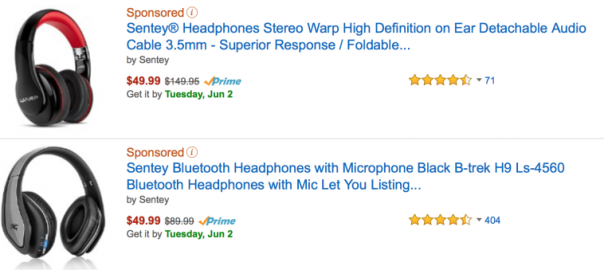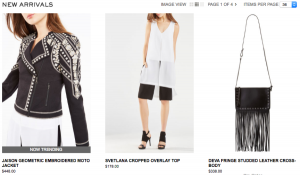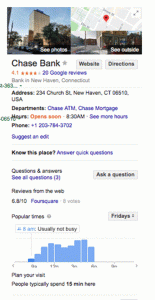In the ever-crowded and competitive e-retail space, how do you find success? Columnist Benjamin Spiegel has 10 tips to help you get started.

Last summer, I wrote about Google’s biggest fears — native and e-retail search. Given the latest predictions around Google’s Buy Now button, it seems I was not that far off!
Since that article was published, I’ve had a lot of clients reach out and ask what winning in e-retail looks like and how to actually win in e-retail sites likes Amazon and Walmart.
With the online → offline path to purchase, we have the opportunity to change preferences between the time the consumer leaves the computer and when he or she picks up the product from the physical shelf. However, the e-retail path to purchase is often much shorter, and there is not a lot of opportunity to affect behavior after someone has made a purchase decision. In e-retail, the user goes straight from Discovery to Preference to Purchase.
In traditional shopping, there is a limited selection, and product availability plays a big role. In e-retail this is almost never a concern; the choices are endless, and technology allows for real-time price comparison and product selection.
But how do you stand out in a crowded and selection-rich environment like Amazon?
Most of the e-retail discovery today happens via search — consumers are asking questions either inside their preferred search engine or directly inside the e-retail environment. In fact, a large amount of category- and product-based search has actually moved from search engines to the e-retail sites.
On top of that, our own research has shown that the conversion and bounce rates on an e-retail page can dramatically vary based on quality, availability and other page-level attributes. Similar to traditional search, it is important to find a healthy balance between search optimization and user experience.
Here are 10 best practices to ensure your SKUs are winning in e-retail — which largely means winning in search and content.
Optimized Product Titles
The product title on e-retail sites plays a key role in a couple of stages in the path to purchase. Primarily, it serves as the “headline” on search results pages within the e-retail environments.

Since the product title is also being used as the HTML page title element, it serves as the headline and URL in search results inside the search engines.

It is also the heading inside the shopping cart, the product detail pages and other list elements.

To aid discovery, the title should:
- Contain the product, brand and category name;
- Be between 50 and 70 characters in length to avoid being trimmed;
- Contain only the information relevant to consumers;
- Have primary keywords in the beginning of title;
- Include the size, color or options (if applicable).
Note: As of today, the algorithms inside the e-retailer sites do not have penalties for being spammy or stuffing keywords into content, so content like that which appears below is unfortunately still performing highly inside those sites.

However, I am confident that this will change soon — and I think it’s horrible from a user experience perspective.
Questions And Answers
One of the “newer” features on sites like Amazon is the Questions and Answers section on the product detail pages. These sections allow consumers to ask pre-sale type questions that can be answered either by the seller or other customers.

Our research has shown that pages with rich Q&A sections average higher conversion rates as well as better engagement. As we know, people typically don’t ask pre-sale questions via e-retail sites; instead, they change their search and buy a different product. If their question has already been asked and answered, however, it may help them commit to the product (or not, depending on the answer).
In addition to that, providing answers early in the sales funnel helps retailers avoid returns and angry customers (with bad feedback) by making sure people are purchasing the correct product.
An added benefit is the fact that the questions generate actual pages that perform very well inside the search engines that will drive additional reach due to the richness of this user-generated organic content.
Ratings And Reviews
Ratings and reviews are an extremely crucial part of e-retail success; not only do they influence the actual rankings inside the e-retail sites, but they also increase the overall conversation rates.
Nielsen studies have shown that 70% of consumers trust consumer reviews above all sorts of brand messages. It is crucial to constantly monitor your reviews for negative comments; nothing is more concerning for a consumer then seeing negative feedback without any response or clarification from the seller.
Many brands are hesitant to reply to negative reviews, but the conversation is happening with or without you, and it’s better to be a part of it. By participating in the conversation, brands can turn a potentially bad situation into something more positive.
Images And Videos
Today’s consumers are curious. They like to touch the packaging; they like to look on the bottom of the box; they read the fine print; and if the product is consumable, they carefully read the ingredients. You need to make sure you provide that experience on the virtual shelf by uploading as many relevant images and videos as possible.

The last thing you want is to have a consumer be unsure about a product fact and choose a competitor’s instead because you forgot to upload the label.
Beautiful, Zoom-In Images
Not everybody has 20/20 vision, and nothing is more frustrating than trying to decipher an image on an e-retail site. Consumers are very visual and often make unconscious choices based on appeal.

We have done a lot of A/B testing with primary images, and a correctly framed appealing image has almost always increased the click-through rate on the listing page.
To summarize, images should:
- Be at least 1,280 pixels or larger in either height or width;
- Have a solid white background;
- Zoom correctly to be as appealing as possible;
- Look correct on all devices and zoom levels.
Multiple SKUs
Similar to traditional shopper marketing, e-retail is all about shelf domination (the percentage of shelf space that is occupied by your product).
A lot of e-retailers have updated their systems to allow dynamic SKUs. Dynamic SKUs, like the one below, allow consumers to configure the product in one screen instead of looking around for the right color/size combination.

While dynamic SKUs are great from a consumer perspective, they do not help your brand in dominating the shelf. I’m not advising anyone to spam the retailer databases. But instead of creating product variations, I would recommend building individual SKUs (when applicable) to win some more of that valuable digital shelf space.
Sponsored Results
If you’re looking for a high ROI and a way to reach consumers at the point of purchase, I highly recommend the sponsored search and display options within the e-retail platforms.

You can do this on Amazon using its own ad platform called Amazon Product Ads. You can also buy ads inside other platforms through third-party sites like HookLogic.com.
These types of advertisements allow you to place highly relevant product ads in front of the right audience at the right time, and especially at the right price and from the right retailer. (Users are already customers.)
Instant Gratification
One of the top features consumers care about when using e-retail sites is product availability. We have performed a lot of tests and confirmed that.
Offering same-day shipping has often doubled conversion rates, so make sure your product is marked as available and shipping quickly. Nothing is more appealing to today’s get-it-now consumers than knowing the product will be in their hands as fast as possible.

Get Real-Time Inspiration
Enterprise-level e-retail platforms are built on amazing technology platforms, and as such, they record and utilize a wealth of information. In order to win in sites like Amazon, we must use this data to constantly improve our e-commerce content.
As an example, the auto-suggest box on Amazon shows us exactly what people are looking for now. In this instance, if I were selling dog toys, I would make sure the product description and title mention “indestructible” and “aggressive,” as those attributes seem to be a high priority when selecting a product.

The Q&A section is another area for great consumer insights. As I was researching this, I came across hundreds of users asking about “Made in the U.S. status” for pet toys. Since it’s a rising preference for chew toys, it seems that we could increase reach and sales by adding it to our description and maybe even product title.
Looking at your competitors’ Q&A section also gives you a wealth of consumer insights because it’s basically like looking at their internal pre-sales questions. Long story short: If your product description contains all the answers, then you will win in e-retail.
Always Monitor
The last, and most important, tip is about monitoring. E-retail sites constantly update their content, change prices and adjust rankings. On top of that, the community is vivid and alive, generating feedback, asking questions and leaving comments.
In order to win in this environment, you need to constantly monitor for negative reviews, updates to competitors’ products and the quality of your SKU content. This will allow you to update and enhance your e-commerce content before it can impact your sales.
There is much more we can do to ensure success in e-retail, but these 10 tips will help you get started. Please feel free to comment or tweet me any questions, and if there is interest, I can write another guide on more granular details such as text density, image attributes and more.
Some opinions expressed in this article may be those of a guest author and not necessarily Marketing Land. Staff authors are listed here.
(Some images used under license from Shutterstock.com.)
Marketing Land – Internet Marketing News, Strategies & Tips
(217)







